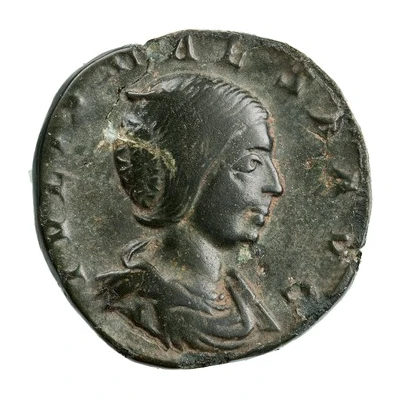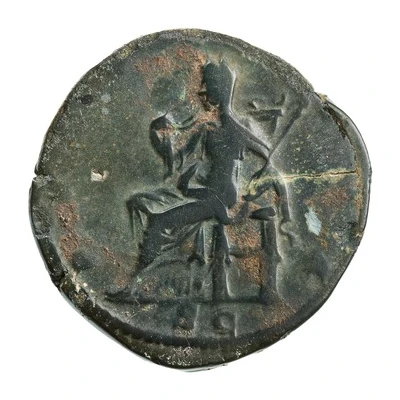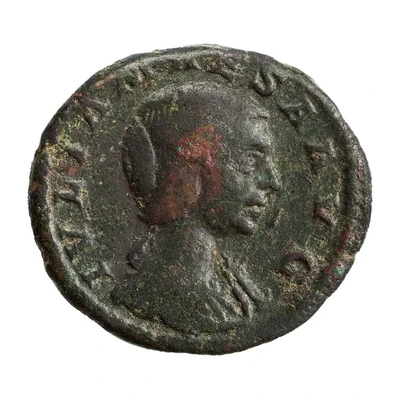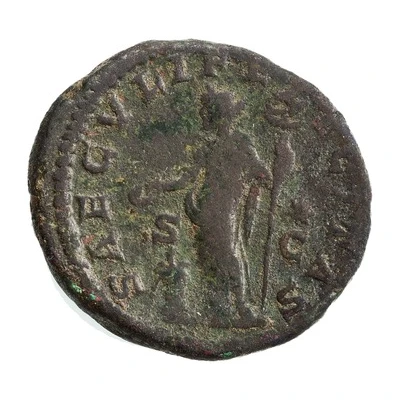


© American Numismatic Society (ANS)
As - Julia Maesa PVDICITIA S C; Pudicitia
| Bronze | 11.4 g | 24 mm |
| Issuer | Rome › Roman Empire (27 BC - 395 AD) |
|---|---|
| Emperor | Elagabalus (Sextus Varius Avitus Basianus) (218-222) |
| Type | Standard circulation coin |
| Years | 218-222 |
| Value | As (1⁄32) |
| Currency | Antoninianus, Reform of Caracalla (AD 215 – 301) |
| Composition | Bronze |
| Weight | 11.4 g |
| Diameter | 24 mm |
| Shape | Round (irregular) |
| Technique | Hammered |
| Demonetized | Yes |
| Updated | 2024-10-05 |
| Numista | N#277111 |
|---|---|
| Rarity index | 100% |
Reverse
Pudicitia, draped, seated left, drawing veil over face with right hand and holding sceptre in left hand.
Script: Latin
Lettering: PVDICITIA S C
Translation:
Pudicitia. Senatus Consultum.
Purity. Decree of the senate.
Comment
Mass varies: 10.72–12.15 g;Example of this type:
American Numismatic Society (ANS)
Source:
Online Coins of the Roman Empire (OCRE)
Interesting fact
The coin featuring Julia Maesa, Pudicitia (Chastity), was minted during the reign of her son, Emperor Elagabalus (218-222 AD). It's interesting to note that Julia Maesa was not only the mother of the emperor but also held significant political power during her time. She was known for her intelligence, political acumen, and her efforts to promote the cult of the Roman goddess Venus. The coin's design, featuring Pudicitia, represents the values of chastity and modesty, which were highly regarded in ancient Roman culture.

